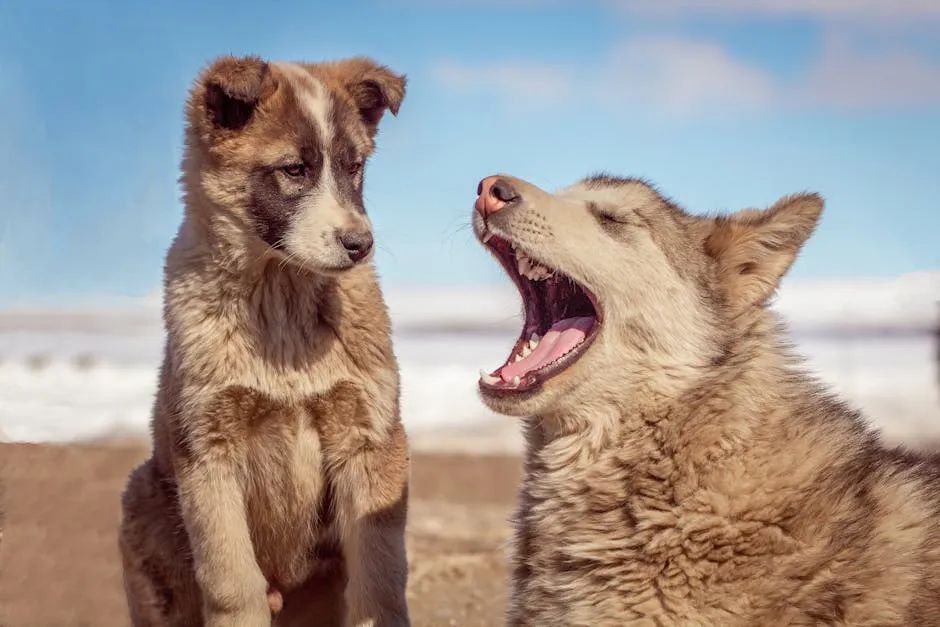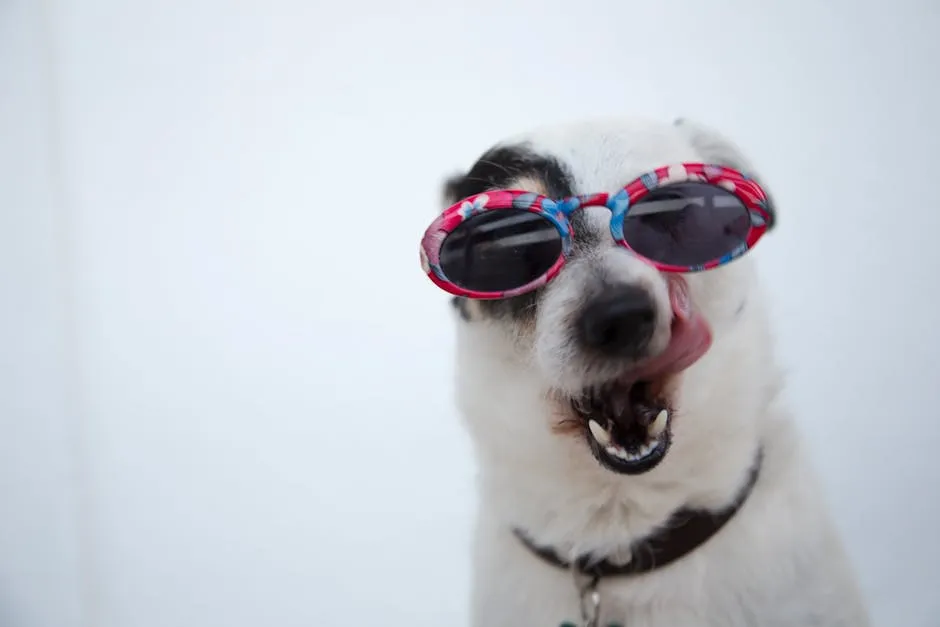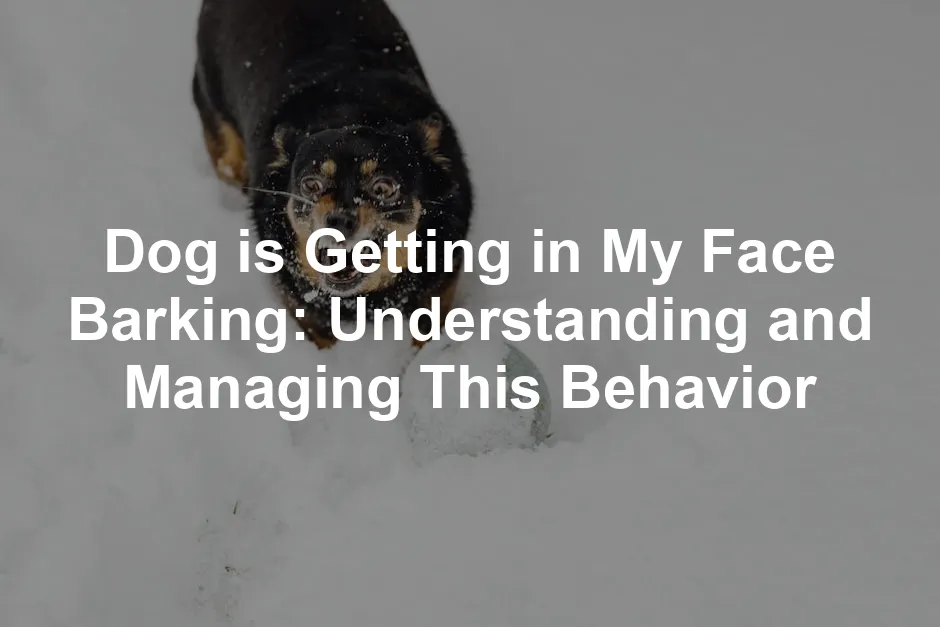Introduction
Does your dog bark right in your face? This behavior can be frustrating. Understanding why dogs do this is essential. Recognizing the root causes can lead to effective management. With the right approach, you can strengthen your bond with your furry friend.
One way to reward your dog for good behavior is with dog training treats. They’re like little pieces of happiness for your pup and can help reinforce positive behavior!
Summary and Overview
Face barking occurs when dogs bark directly at their owners. This can happen for several reasons, including seeking attention or expressing excitement. For both dogs and their owners, face barking can lead to stress. If not addressed, it can escalate into more significant issues. Fortunately, there are strategies to manage this behavior effectively. Positive reinforcement is crucial. Understanding how dogs communicate will help you respond better.

To learn more about positive reinforcement, check out these effective positive reinforcement techniques for stubborn dogs.
Understanding Dog Barking Behavior
Common Reasons for Barking in Dogs
Attention Seeking: Dogs often bark when they want something. This could be food, playtime, or your attention.
Fear or Anxiety: Some dogs bark due to stress or perceived threats. They may feel insecure in certain situations.
Excitement: Happy dogs tend to bark when they’re excited. This can happen during play or when greeting you.
Boredom: A lack of mental or physical stimulation can lead to barking. Dogs need regular exercise and engagement.
Territorial Behavior: Dogs may bark to protect their space. This is common when they sense intruders or strange noises.
Understanding these reasons can help you manage your dog’s barking more effectively. With patience and the right techniques, you can reduce this behavior and improve your relationship.

Speaking of engagement, consider getting interactive dog toys to keep your furry friend entertained and mentally stimulated. They’re perfect for burning off that excess energy!
The Psychology Behind Face Barking
Have you ever wondered why your dog barks right in your face? This behavior often stems from instinctual and social reasons. Dogs are naturally social creatures. They use barking and body language to communicate their feelings and needs. Face barking can signal various emotions. It might express excitement when you come home or anxiety in new situations.
When your dog barks at you, it often combines different emotions. It may be a demand for attention, a way to express excitement, or an indication of anxiety. For instance, a dog might bark to get you to play or respond to a situation that makes them feel uneasy. Understanding these signals can help you respond appropriately and strengthen your bond.
By recognizing the underlying reasons for face barking, you can begin to address the behavior more effectively. After all, effective communication between you and your dog builds a happier, healthier relationship.

Identifying Triggers for Face Barking
Observational Strategies
To manage face barking, start by observing your dog. Keep a record of when barking occurs. Note the environment and situations that lead to barking. Is it triggered by specific people, sounds, or activities? Identifying these triggers is vital. It helps you understand your dog’s behavior better. Over time, this insight will guide you in reducing unwanted barking.
Understanding Context
The context of barking plays a significant role in behavior. For example, if your dog barks when visitors arrive, it might be a mix of excitement and anxiety. Your own reactions can reinforce or discourage barking. If you respond with attention, you might inadvertently encourage the behavior. On the other hand, remaining calm and neutral can help reduce barking over time. Understanding these dynamics is essential for effective training.

Effective Training Techniques
Positive Reinforcement
Positive reinforcement is key in training your dog to stop barking. Rewarding calm behavior helps your dog understand what you expect. When your dog is quiet, offer treats or praise immediately. This reinforces the idea that being quiet is beneficial.
To teach the “quiet” command, start by using a simple cue. When your dog barks, calmly say “quiet.” Wait for a moment of silence, even if it’s brief. When they stop, reward them with a treat. Repeat this process consistently. Over time, your dog will learn to associate the command with quietness.
Incorporating treats and praise is essential. Use high-value rewards to motivate your dog. This approach creates a positive learning environment. With patience and consistency, you can effectively teach your dog to reduce face barking.

Speaking of treats, why not try a dog training clicker? It’s an excellent tool for reinforcing positive behavior and makes training more effective and fun!
Redirecting Behavior
If your dog is barking in your face, redirecting that energy can be helpful. Start by teaching alternative behaviors. For instance, when they bark, guide them to a favorite toy. This helps them associate play with being quiet. Interactive toys can also keep them engaged. Puzzle feeders are great for mental stimulation.
Training exercises can further help. Teach your dog to fetch or play tug-of-war. These activities channel their excitement into something productive. Structured playtime is crucial. Set aside specific times for play and training. This consistency can reduce their urge to bark for attention.
Speaking of structured play, consider investing in dog puzzle toys. They provide entertainment and challenge your dog’s mind, all while keeping them quiet!

Training for Calmness
Teaching your dog to remain calm is essential. Start with basic commands like “sit” or “stay.” Use treats to reward them for staying calm, especially during exciting moments. Gradually increase distractions in your training sessions. This builds their impulse control.
Impulse control training has many benefits. It helps your dog learn to wait for treats or playtime. This can reduce their tendency to bark when excited. Consistency is key in your training efforts. Practice regularly and reinforce calm behavior.
Also, consider short training sessions throughout the day. This keeps your dog focused without overwhelming them. With steady training, your dog will learn to relax, even when excitement arises.

Creating a Calm Environment
Reducing stimuli that lead to barking is vital. A calm environment helps your dog feel secure. Start by managing their surroundings. Use curtains to block outside distractions. This simple change can significantly reduce barking.
When guests arrive, create a safe space for your dog. Designate a quiet area where they can retreat. You might use a crate or a separate room. Provide their favorite toys or a blanket to help them feel comfortable. This way, they can relax rather than feel overwhelmed by the new activity.

To help your dog feel even more secure, consider a dog calming aid. It can help soothe anxious pups during stressful moments.
Socialization and Exposure
Socializing your dog is crucial for reducing anxiety. Introduce them gradually to new people and environments. This helps them feel more at ease in different situations. Start with calm, controlled settings. Allow your dog to approach new experiences at their own pace.
Gradual exposure is effective. For example, invite one friend over before hosting a large gathering. This helps your dog adjust without feeling overwhelmed. Over time, they’ll learn to stay calm in various situations. Building their confidence through socialization helps reduce face barking.

Seeking Professional Help
When to Consult a Trainer or Behaviorist
Sometimes, despite our best efforts, face barking can persist. If you notice consistent barking that disrupts your daily life, it may be time to seek professional help. Signs that indicate you might need a trainer include barking that escalates or occurs in inappropriate settings. If your dog shows signs of aggression or anxiety during these episodes, don’t hesitate to reach out for guidance.
Working with certified dog trainers or behaviorists offers many benefits. They can provide tailored training plans that address your dog’s specific needs. Professionals use proven techniques to help modify behavior effectively. Plus, their expertise can enhance your understanding of canine communication. This ultimately strengthens the bond between you and your furry friend.

And if you’re looking to educate yourself further, a great resource is the dog training book that covers various techniques and approaches!
If you’re looking for local assistance, consider finding board and train dog trainers near me to help with your dog’s training needs.
Conclusion
In this article, we explored the reasons behind face barking and effective management strategies. Understanding your dog’s needs is vital in addressing this behavior. Be patient and compassionate as you work through these challenges. With consistent training and management, barking can be significantly reduced. Remember, your efforts will lead to a calmer and happier environment for both you and your dog.

And don’t forget to stock up on essentials! You might want to consider a dog first aid kit or a dog water bottle for those adventures! Keeping your dog safe and hydrated is essential.
FAQs
Why does my dog bark in my face?
Dogs often bark in your face to seek attention or express excitement. They may also do this to communicate their needs.
How can I stop my dog from barking in my face?
Use positive reinforcement techniques. Reward your dog for being quiet and redirect their attention when barking occurs.
Is face barking a sign of aggression?
Not necessarily. Face barking is usually a sign of excitement or anxiety. Always assess your dog’s body language to understand their feelings.
What can I do to manage barking when guests arrive?
When guests arrive, your dog might bark excitedly. This behavior can be managed with a few effective strategies. First, train your dog to go to a designated spot when visitors arrive. This gives them a safe place to relax. You can use a mat or a crate as their special area. Additionally, practice greetings without excitement. Before guests arrive, have your dog sit calmly. Reward them with treats for remaining calm when the doorbell rings. This reinforces the idea that calm behavior brings rewards. Creating a calm environment is vital. Consider using calming music or white noise to help drown out unexpected sounds. If your dog feels secure, they are less likely to bark excessively. Lastly, socialization is essential. Gradually introduce your dog to new experiences with guests. By exposing them to different people, they will learn to remain calm.
How long does it take to train my dog to stop barking?
The time it takes to train your dog to stop barking varies greatly. Each dog is unique, and many factors come into play. Factors like age, breed, and temperament can influence training timelines. Consistency is key. Training your dog requires regular practice and reinforcement. If you stay committed and patient, progress will come. Some dogs may learn quickly, while others may take months. Your training methods also matter. Positive reinforcement tends to yield better results than harsh methods. Using treats, praise, and toys can motivate your dog to learn. Remember, every dog learns at their own pace. Celebrate small victories along the way. With dedication and the right approach, you can help your dog become calmer over time.
Should I use bark collars to manage excessive barking?
Using bark collars can seem like a quick fix for excessive barking. However, it’s essential to consider their effectiveness and ethics. Many experts recommend against using them. Bark collars may stop barking temporarily, but they often do not address the root cause. Your dog might continue to bark when the collar is off. Instead of solving the problem, these collars can lead to fear or anxiety. Training your dog through positive reinforcement is a better approach. Focus on teaching commands and rewarding good behavior. This builds trust and strengthens your bond with your pet. If barking remains an issue, seek professional help. A certified trainer can provide personalized guidance. They will help you find the right strategies to manage barking effectively. Prioritize your dog’s well-being over convenience.
Please let us know what you think about our content by leaving a comment down below!
Thank you for reading till here 🙂
All images from Pexels





